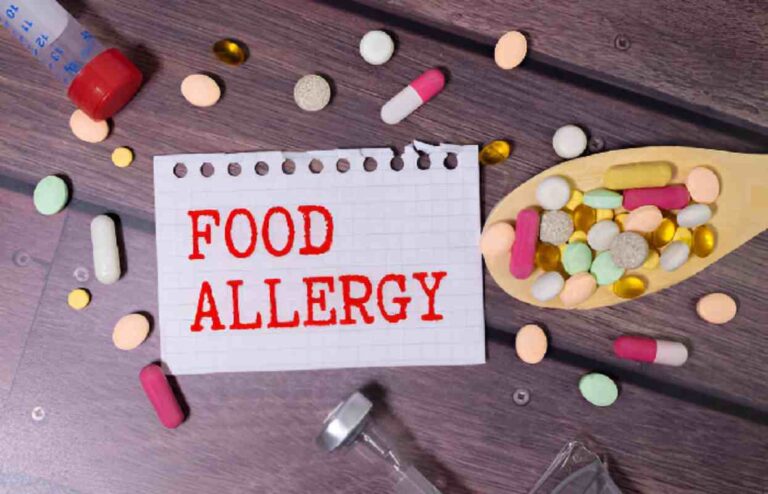Table of Contents
Definition of Food Allergy
Food allergy to diseases that cause different symptoms appears on the body towards certain types of food. Here are the reasons and symptoms of food allergies. Some are allergic to certain types of foods.
Food allergies are a natural reaction to the immune system, with antibodies sending a signal to the immune system to release histamine. This chemical causes allergy symptoms, and here we identify the causes and symptoms of food allergies and the most important types of foods that cause allergies.
Symptoms of Food Allergies
Nausea, severe pain, and abdominal cramps, which may be accompanied by vomiting and diarrhoea.
If someone is feeling imbalanced when eating certain types of foods that cause allergies.
Swelling appears in some body areas, such as the tongue, face, lips, and throat infections.
Skin infections and rashes, causing skin itching.
When you have severe food allergies, you develop shortness of breath.
Food allergies can affect the respiratory system, causing nasal congestion, sneezing, and coughing with fatigue.
Allergy treatment
A great way to treat allergies is to avoid their causes.
There are a lot of medications that can be taken to control allergy symptoms:
Antihistamines: Prevents the formation of histamine, which causes allergic symptoms such as runny nasal congestion
Decongestants: Constrict blood vessels in the nose and then decongest
Topical cortisone creams: Stop the herd and control the redness of the skin.
Cortisone tablets: prescribed to reduce tumour and control allergy symptoms.
Epinephrine injection: The most critical treatment ever considered as it will be used in cases of severe allergies that may lead to death.
They were taken within minutes of the onset of symptoms of severe allergic reactions.
The Common Foods that Cause Food Allergy
Seafood is a food that causes allergies in some, especially certain types of fish such as tuna and salmon and oysters, shrimp, and crabs.
Bovine milk causes allergies, especially in children and infants.
Wheat and gluten used in the manufacture of biscuits, pasta, and pieces of bread, cause some allergy to food and the appearance of symptoms.
Some types of fruits, such as strawberries and bananas whose symptoms are usually in the form of itchy skin.
When eating nuts, symptoms of allergies, including abdominal pain and nausea, may appear, so you should know what type of food causes allergies.
Foods containing soybeans may lead to allergy symptoms in some, and soy allergy symptoms may appear in infants who eat specific soy-containing food formulations.
Peanuts are also foods that cause food allergies.
Eggs are one of the most popular foods that cause food allergies in adults and young people. Go immediately to the doctor
If your child has an allergy symptom, immediately go to your doctor, who may recommend an over-the-counter allergy medication.
New Protocols for the Treatment of Food Allergy
Immunotherapy is one of the most prominent modern protocols in the treatment of allergies.
There are two types of immunotherapies
Allergy Tablets:
It depends on giving the infected person increased doses of allergens. Over time, a person’s sensitivity to these stimuli decreases. Injections work best for pollen and insect allergies and do not necessarily work for food and drug allergies
Sublingual tablets:
It depends on the idea of previous injections, but in the form of tablets under the tongue.
Conclusion
The patient is given reduce and increase doses of allergens in a tablet place under the tongue. Effective in cases of asthma and allergic rhinitis. Mainly because they contain a high protein content. A great way to treat allergies is to avoid their causes while taking medications such as antihistamines and cortisone to control associated symptoms. When a severe allergic reaction occurs, an epinephrine injection taken immediately under the supervision of your doctor.


